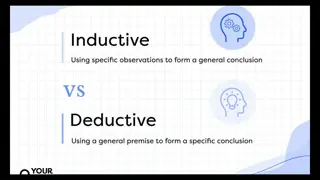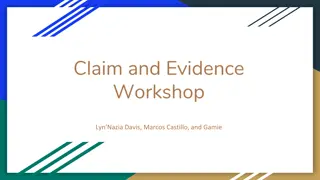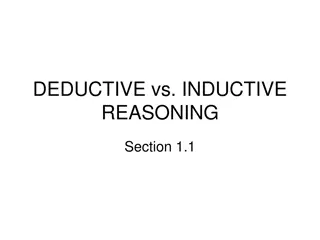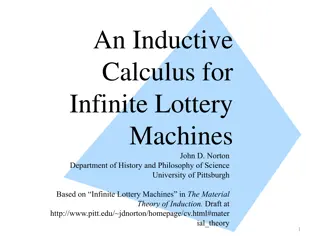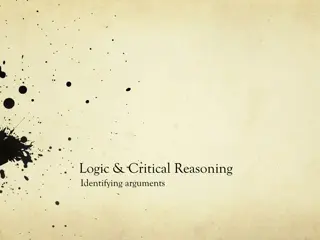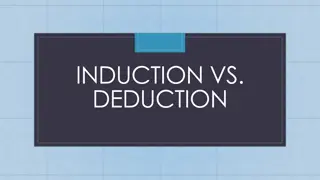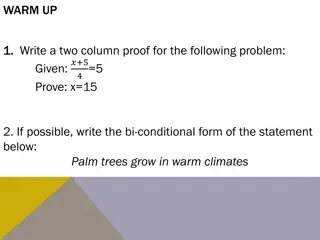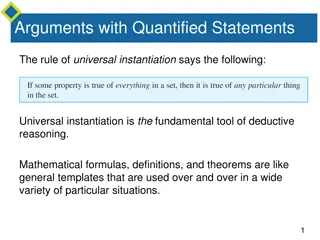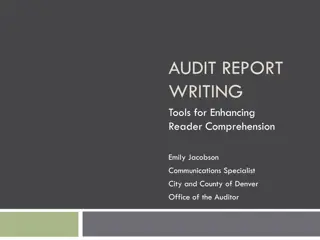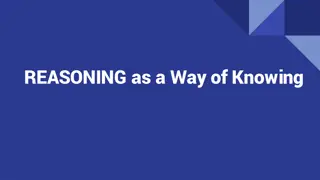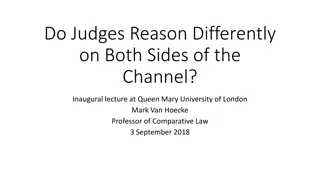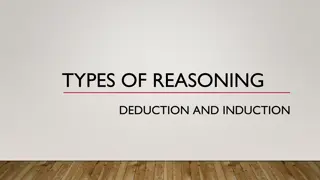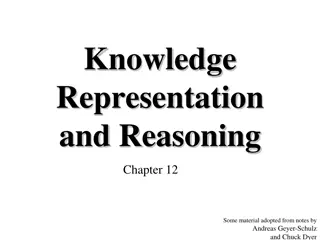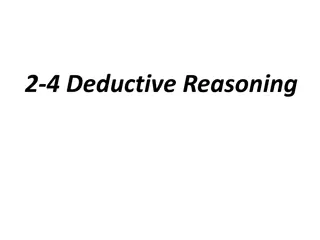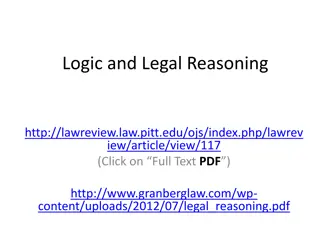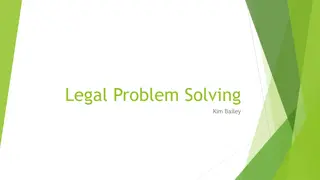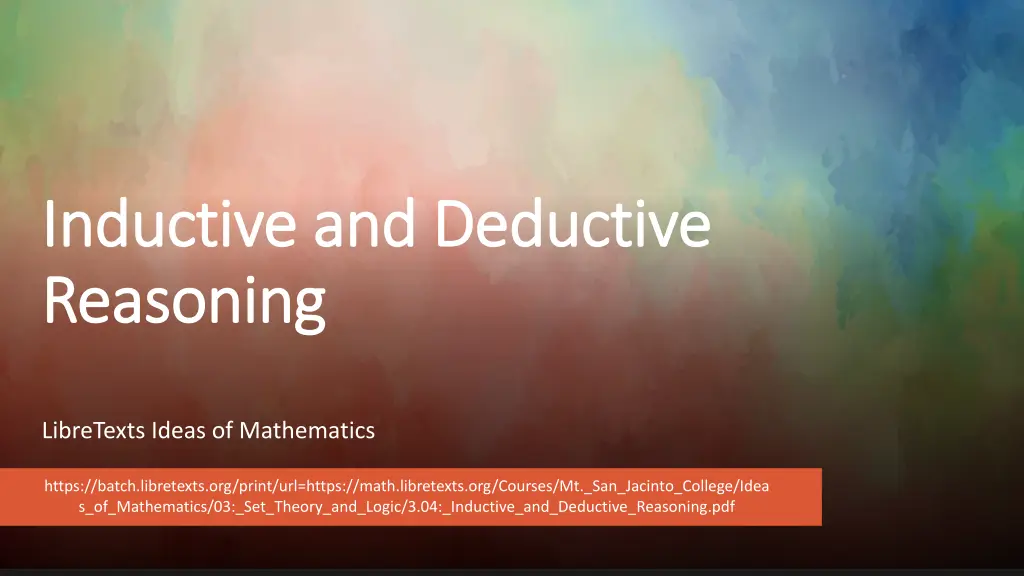
Problem Solving Strategies and Reasoning Concepts
Explore the concepts of inductive and deductive reasoning, along with problem-solving strategies like Polya's 4-step process. Understand how to draw conclusions and devise plans effectively in mathematics.
Download Presentation

Please find below an Image/Link to download the presentation.
The content on the website is provided AS IS for your information and personal use only. It may not be sold, licensed, or shared on other websites without obtaining consent from the author. If you encounter any issues during the download, it is possible that the publisher has removed the file from their server.
You are allowed to download the files provided on this website for personal or commercial use, subject to the condition that they are used lawfully. All files are the property of their respective owners.
The content on the website is provided AS IS for your information and personal use only. It may not be sold, licensed, or shared on other websites without obtaining consent from the author.
E N D
Presentation Transcript
Inductive and Deductive Inductive and Deductive Reasoning Reasoning LibreTexts Ideas of Mathematics https://batch.libretexts.org/print/url=https://math.libretexts.org/Courses/Mt._San_Jacinto_College/Idea s_of_Mathematics/03:_Set_Theory_and_Logic/3.04:_Inductive_and_Deductive_Reasoning.pdf
Reasoning Reasoning is the act of drawing a conclusion from assumed fact(s) called premise(s). Martha wants to buy a new smartphone, so she decides to get a job. https://batch.libretexts.org/print/url=https://math.libretexts.org/Courses/Mt._San_Jacinto_College/Ideas_ of_Mathematics/03:_Set_Theory_and_Logic/3.04:_Inductive_and_Deductive_Reasoning.pdf
Inductive reasoning: Inductive reasoning: uses a collection of specific instances specific instances as premises and uses them to propose a general conclusion general conclusion. EXAMPLE: When I went to the store last week I forgot my purse, and when I went today I forgot my purse. I always forget my purse when I go to the store. https://batch.libretexts.org/print/url=https://math.libretexts.org/Courses/Mt._San_Jacinto_College/Ideas_ of_Mathematics/03:_Set_Theory_and_Logic/3.04:_Inductive_and_Deductive_Reasoning.pdf
Deductive reasoning: uses a collection of general statements as premises and uses them to propose a specific conclusion. EXAMPLE: Spicy food makes me teary. Habanero sauce is spicy food. Habanero sauce makes me teary. https://batch.libretexts.org/print/url=https://math.libretexts.org/Courses/Mt._San_Jacinto_College/Ideas_ of_Mathematics/03:_Set_Theory_and_Logic/3.04:_Inductive_and_Deductive_Reasoning.pdf
Polyas 4-step process: 1. Understand the problem 2. Devise a plan 3. Carry out the plan 4. Look back and reflect Problem Solving Strategies Problem Solving Strategies https://mathminds.com.au/maths-problem-solving-strategies/
1.Understand the problem Read the problem aloud Summarize the information Create a picture or diagram Act it out Use keyword analysis Problem Solving Strategies Problem Solving Strategies https://mathminds.com.au/maths-problem-solving-strategies/
2. Devise a plan Look for a pattern Guess and check Working backwards Use a formula Eliminate the possibilities Use direct reasoning Solve a simpler problem Solve an equation Problem Solving Strategies Problem Solving Strategies https://mathminds.com.au/maths-problem-solving-strategies/
3. Carry out the plan Be systematic Check your work Be flexible Don't give up Problem Solving Strategies Problem Solving Strategies https://mathminds.com.au/maths-problem-solving-strategies/
4. Look back and reflect What was the most challenging part of the problem? Was one method more effective than another? Would you do something differently next time? What have you learned from this experience? Problem Solving Strategies Problem Solving Strategies https://mathminds.com.au/maths-problem-solving-strategies/
Practice makes progress Problem Solving Strategies Problem Solving Strategies https://mathminds.com.au/maths-problem-solving-strategies/
Chapter 3 REAL NUMBER SYSTEMS AND NUMBER THEORY https://openstax.org/details/books/contemporary-mathematics
A sequence of numbers is a list of numbers in order. 3.10 3.10- -3.11 Arithmetic and Arithmetic and Geometric Geometric Sequences Sequences 3.11 10, 10, 8, 9, 10, 6, 10 1, 5, 7, 9, 11, 13, ?1, ?2, ?3, ?4, Each value in the sequence is called a term.
Arithmetic sequence: eachterm is the previous term plus a fixed number, called the common difference 10, 20, 30, 40, 50, 3.10 3.10- -3.11 Arithmetic and Arithmetic and Geometric Geometric Sequences Sequences 3.11 Geometric sequence: each term is the previous term multiplied by the same specified value, called the common ratio 1, 2, 4, 8, 16,
Which sequences are arithmetic and which are geometric? What is the next term in the sequence? 3.10 3.10- -3.11 Arithmetic Arithmetic and and Geometric Geometric Sequences Sequences 3.11 8, 16, 24, 32, ____ 3, 6, 12, 24, ____ 7, 2, -3, -8, ____

